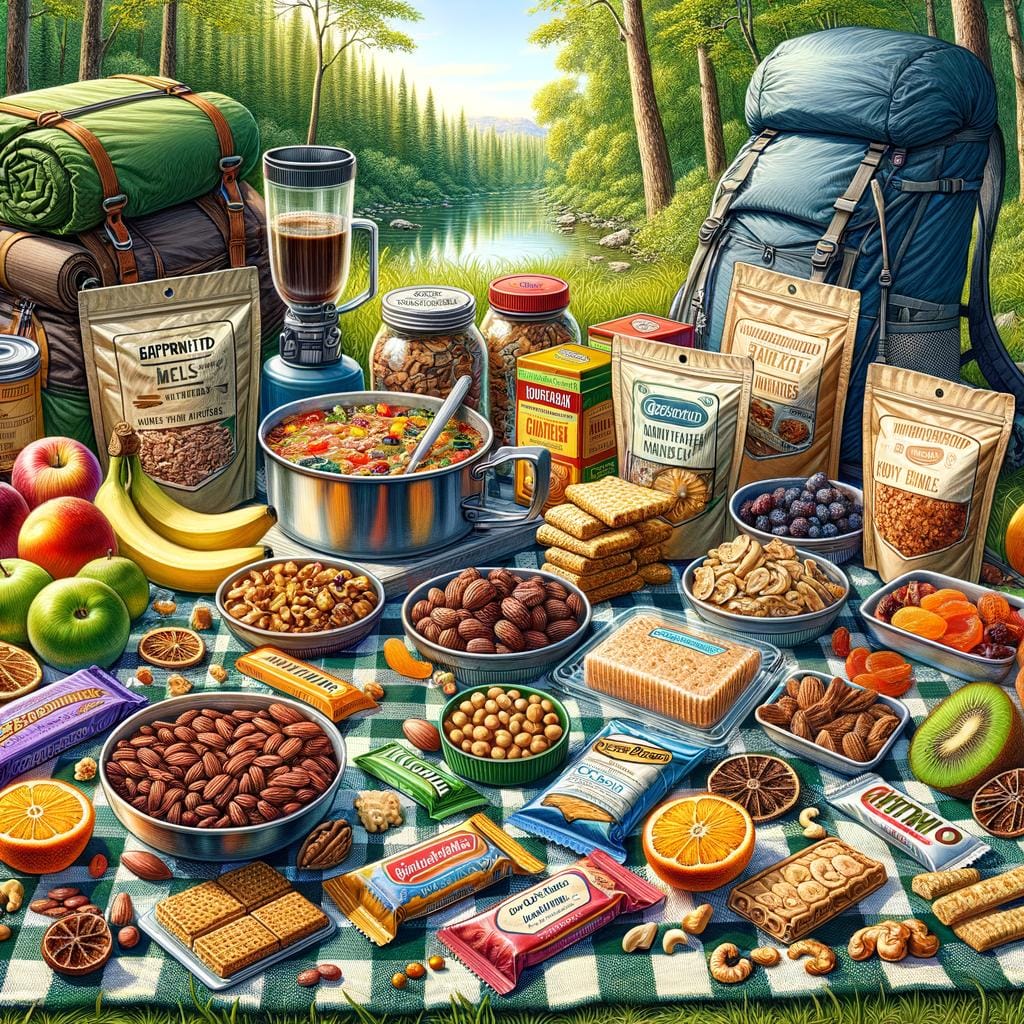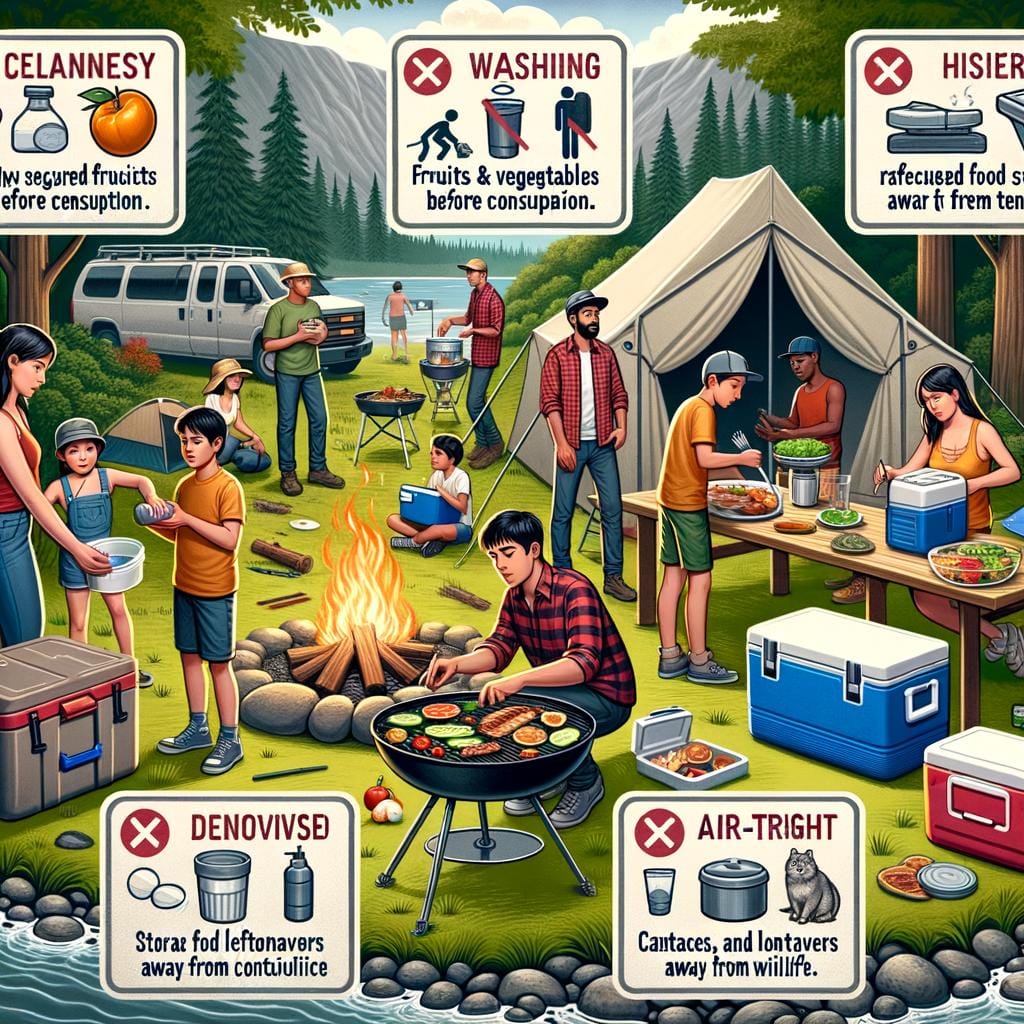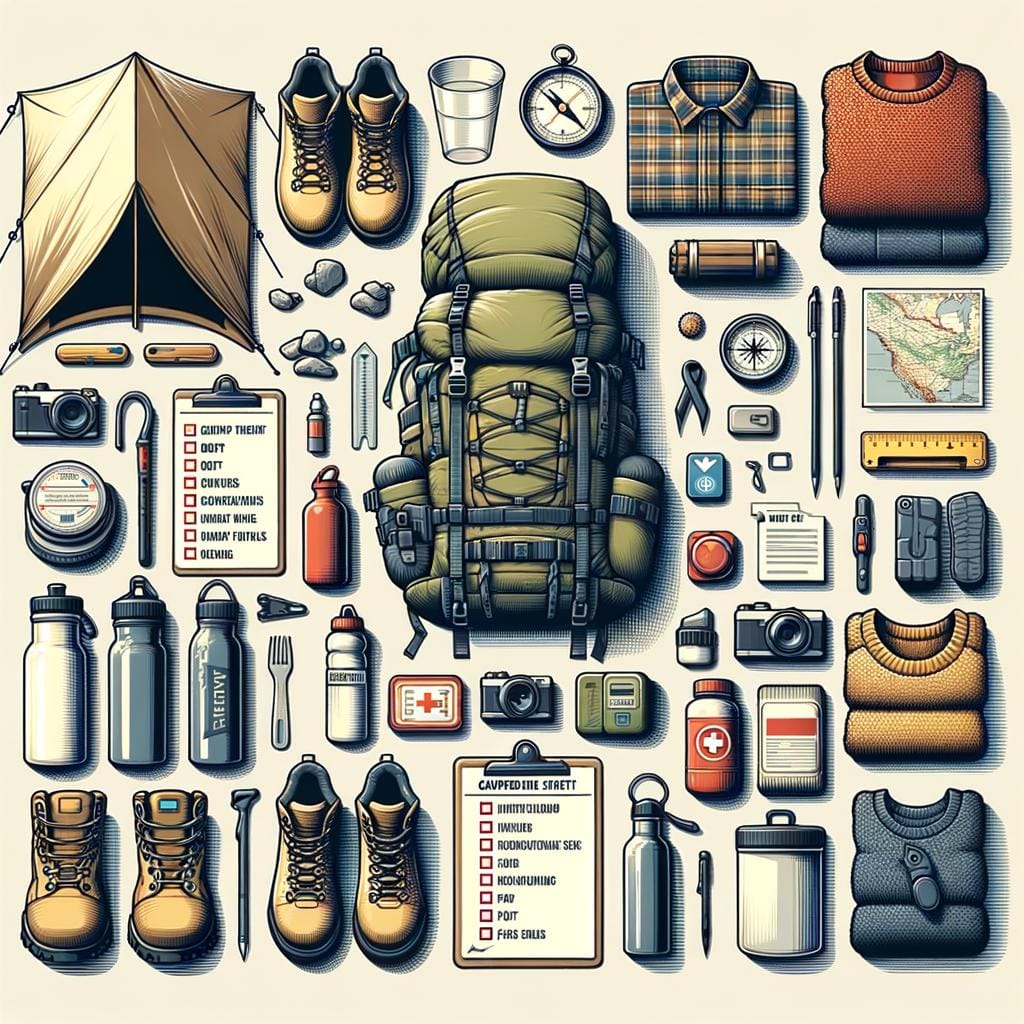Heading into the great outdoors for a backpacking adventure requires careful planning, especially when it comes to essential supplies like backpacking food. The right choice of meals and snacks can make or break your experience on the trail, providing you with the energy and nutrition needed to tackle challenging terrains and breathtaking landscapes.
In this article, we will explore the importance of backpacking food in ensuring a successful trip, along with tips and tricks for planning, preparing, and enjoying your meals while exploring nature.
When embarking on a backpacking journey, it is crucial to carefully plan ahead when it comes to your food supply. From ensuring adequate caloric intake to packing lightweight yet nutritious options, proper meal preparation is essential for sustaining your energy levels throughout the trip.
Choosing the right backpacking food can also help alleviate fatigue and keep you fueled for long days of hiking and exploring. By selecting items that are easy to transport, quick to prepare, and packed with nutrients, you can maximize both your enjoyment and performance on the trail.
Whether you opt for dehydrated meals or fresh ingredients, it is important to consider the pros and cons of different food choices for backpacking. While dehydrated options offer convenience and longer shelf life, fresh foods may provide a fresher taste and higher nutritional value.
Understanding the benefits of each type of food can help you make informed decisions about what to pack for your adventure. Additionally, investing in portable cooking gear can expand your culinary possibilities while exploring the great outdoors, allowing you to enjoy hot meals even when miles away from civilization.
Planning Ahead
When it comes to planning a backpacking trip, one of the most crucial aspects to consider is the food you will bring along. Proper planning and preparation can make a significant difference in the overall success and enjoyment of your adventure. Here are some essential tips to help you prepare meals and snacks for backpacking:
- Make a meal plan: Before heading out on your trip, take some time to plan out your meals for each day. Consider factors such as caloric intake, nutritional value, weight, and storage space. Having a detailed meal plan will help ensure that you pack the right amount of food and avoid running out or carrying excess weight.
- Pack compact and lightweight foods: When selecting foods for your backpacking trip, opt for items that are not only nutritious but also lightweight and compact. Dehydrated fruits and vegetables, nuts, jerky, energy bars, and instant meals are great options that provide essential nutrients without taking up too much space or adding unnecessary weight to your pack.
- Prepare single-serve portions: To make meal preparation easier while on the trail, pre-portion ingredients into single servings. This not only saves time but also helps prevent waste by ensuring you only use what you need. Use resealable bags or containers to store individual portions of grains, nuts, dried fruits, or spices.
When it comes to packing food for a backpacking trip, proper planning is key to ensuring you have enough sustenance without overburdening yourself with excessive weight. By following these tips for preparing meals and snacks ahead of time, you can set yourself up for a successful and enjoyable outdoor adventure.
Lightweight and Nutritious
When it comes to backpacking food, choosing options that are both lightweight and nutritious is essential for a successful trip. Packing the right kind of food can make a significant difference in your energy levels and overall enjoyment while out on the trails. Here are some tips on how to choose the best backpacking food options for your next adventure:
- Consider calorie density: Opt for foods that are high in calories but low in weight, such as nuts, seeds, dried fruits, and energy bars. These will provide you with the necessary energy without adding too much bulk to your pack.
- Pack nutrient-dense foods: Look for options that are rich in essential nutrients like protein, carbohydrates, and fats. Items like dehydrated meals, nut butter packets, and whole grain crackers can help keep you fueled throughout your trek.
- Choose versatile ingredients: Select items that can be used in multiple recipes to maximize your meal options while minimizing the number of individual items you need to carry. Ingredients like instant rice, powdered milk, and dried vegetables can be mixed and matched to create different dishes.
Additionally, when selecting backpacking food options, it’s important to take into consideration any dietary restrictions or preferences you may have. Whether you’re vegan, gluten-free, or have allergies to certain foods, there are plenty of specialized backpacking food products available that cater to a variety of needs. By making thoughtful choices and planning ahead, you can ensure that your meals and snacks on the trail are not only delicious but also nourishing for your body.
When it comes to backpacking food options, convenience is key. Opting for lightweight and nutritious choices will ultimately enhance your outdoor experience and make meal planning a breeze during your adventures in nature. By focusing on calorie density, nutrient-dense ingredients, versatility in cooking supplies around dietary restrictions or preferences when selecting the best foods for backpacking trips will set you up for success as you explore the great outdoors with a well-fed belly.
Dehydrated vs Fresh
When it comes to choosing the best backpacking food options, one of the key decisions you’ll have to make is whether to go for dehydrated or fresh food. Both options have their pros and cons, and understanding them can help you make the right choices for your backpacking trip.
Dehydrated food is a popular choice among backpackers due to its lightweight nature and long shelf life. Brands like Mountain House offer a wide range of dehydrated meals that simply require hot water to rehydrate, making them convenient on the trail. Additionally, dehydrated food retains much of its nutritional value, making it a practical choice for hikers looking for a quick and easy meal option.
On the other hand, fresh food can provide more variety in taste and texture, offering a welcome break from the monotony of dehydrated meals. While fresh food may be bulkier and heavier to carry, some hikers prefer the taste of freshly prepared meals even if it requires more effort. Bringing along perishable items like fruits, vegetables, or even meats can enhance your overall backpacking experience by adding a touch of home-cooked goodness to your adventure.
| Dehydrated Food | Fresh Food |
|---|---|
| Lightweight and long shelf life | More variety in taste and texture |
| Convenient on the trail with easy preparation | May require more effort in meal preparation |
| Retains nutritional value | Adds a touch of home-cooked goodness to meals |
Cooking Away From Home
When heading out for a backpacking trip, having the right portable cooking gear can make a huge difference in your overall experience. Whether you’re planning to cook simple meals or gourmet treats on the go, choosing the right equipment is essential. One of the most important factors to consider when selecting cooking gear for backpacking is weight. Opt for lightweight and compact items that won’t weigh you down as you hike through different terrains.
A portable stove is a must-have item for any backpacker looking to cook meals on the trail. There are various types of stoves available, including canister stoves, liquid fuel stoves, and solid fuel stoves. Canister stoves are popular among backpackers due to their convenience and ease of use.
They are lightweight, compact, and easy to operate, making them ideal for cooking meals quickly while on the go. Liquid fuel stoves are another great option for backpackers who need a reliable cooking source in different weather conditions.
In addition to a stove, investing in a lightweight cookware set is essential for preparing meals while backpacking. Look for pots and pans that are durable yet light enough to carry comfortably in your backpack.
Collapsible utensils and plates are also great space-saving options for backpackers who want to enjoy hot meals on the trail without sacrificing too much room in their packs. By choosing the right portable cooking gear, you can ensure that your backpacking food experience is not only delicious but also convenient and enjoyable throughout your journey.
Trail-Friendly Recipes
When embarking on a backpacking trip, having delicious and easy-to-make meals is crucial to keeping energy levels high and maintaining morale. Trail-friendly recipes play a significant role in ensuring that backpackers have satisfying meals that are not only nutritious but also convenient to prepare.
Whether it’s whipping up a quick breakfast before hitting the trail or enjoying a hearty dinner after a long day of hiking, having a variety of recipes on hand can make all the difference in the overall backpacking experience.
Breakfast Ideas
For a quick and energizing breakfast, consider packing instant oatmeal packets mixed with nuts, dried fruits, and powdered milk for a filling start to your day. Another option is to assemble DIY breakfast wraps by spreading peanut butter on tortillas and sprinkling with granola or adding cheese, sausage, and eggs for a heartier meal. These breakfast options are not only easy to prepare but also provide essential nutrients to fuel your body for the day ahead.
Lunch and Dinner Options
When it comes to lunch and dinner on the trail, consider making pasta salads with dehydrated vegetables, cheese, and cured meats for a flavorful meal that requires minimal cooking. Another option is to create foil packet dinners with pre-cut vegetables, protein sources like chicken or tofu, seasonings, and olive oil for an effortless cooking experience over a campfire or portable stove. These meals are not only delicious but also customizable based on personal preferences and dietary restrictions.
Snack Suggestions
Don’t forget about snacks while out on the trail. Pack nutrient-dense options like beef jerky, trail mix with nuts and dried fruits, energy bars, or homemade granola bars for quick energy boosts throughout the day.
Additionally, consider dehydrating fruits at home before your trip or packing pre-packaged fruit leather for a sweet treat that won’t weigh down your pack. Having these snack options readily available will keep hunger at bay and provide sustained energy during long hikes.
By incorporating diverse trail-friendly recipes into your backpacking food plan, you’ll be able to enjoy delicious meals without sacrificing convenience or nutrition. Experimenting with different ingredients and flavors can elevate your backpacking experience while ensuring that you stay fueled throughout your outdoor adventures. Don’t underestimate the importance of good food when it comes to making memories in the great outdoors.
Staying Hydrated
When embarking on a backpacking trip, staying hydrated is absolutely crucial for maintaining energy levels and overall well-being. Proper hydration is key to preventing fatigue, muscle cramps, and even more serious issues like heat stroke. Inadequate water intake can quickly turn a pleasant hike into a challenging and potentially dangerous experience. In addition to drinking enough water, making smart beverage choices can also impact your hydration levels during your journey.
Water: The Ultimate Hydration Source
Water is the most essential beverage for backpackers. It helps regulate body temperature, carries nutrients to cells, and aids in digestion and waste removal. It’s important to drink water regularly throughout the day, especially in hot or dry climates where dehydration can occur more rapidly.
On average, hikers should aim to consume at least 2 liters of water per day while on the trail. Investing in a durable water bottle or hydration reservoir is a wise choice for easy access to water during your hike.
Beverage Choices for Backpackers
While water should be your primary source of hydration, you may want to mix things up with other beverages that can provide both hydration and energy. Electrolyte drinks can be useful for replacing lost salts during strenuous activity. Tea or coffee can provide a caffeine boost for early mornings or long days on the trail.
Just be mindful of sugary beverages or those high in caffeine, as they can actually contribute to dehydration if consumed in excess. Consider packing instant drink mixes like electrolyte powders or powdered fruit drinks for variety without adding extra weight to your pack. Remember that alcohol dehydrates the body, so it’s best avoided while backpacking.
By prioritizing hydration and making thoughtful beverage choices while backpacking, you can ensure that you have the stamina and vitality needed to fully enjoy your outdoor adventure. Proper hydration will not only keep you feeling good physically but also mentally sharp and ready to tackle whatever challenges come your way on the trail.
Packing and Storing Food
When embarking on a backpacking trip, one of the most crucial aspects to consider is packing and storing food properly to ensure it stays fresh throughout your journey. Without access to refrigeration or convenient grocery stores, it’s important to plan ahead and pack foods that will not spoil easily. Choosing the right packaging materials and storage methods can make a huge difference in maintaining the quality of your backpacking food.
One essential tip for keeping your backpacking food fresh is to opt for lightweight, airtight containers or resealable bags. Dehydrated fruits, nuts, and jerky are great options as they are not only nutritious but also have a longer shelf life compared to fresh produce.
Pre-packaged freeze-dried meals are another convenient choice that require minimal preparation and stay fresh for longer periods of time. Additionally, consider using vacuum-sealed bags or containers with tight seals to prevent moisture from getting inside and causing spoilage.
Another important factor to consider when packing and storing food for backpacking is proper organization. Keep similar items together and label each container with its contents and expiration date to easily identify what you have available.
It’s also wise to pack perishable items towards the bottom of your backpack where they will stay cooler, while snacks and non-perishable foods can be placed towards the top for easy access throughout the day. By following these best practices for packing and storing your backpacking food, you can ensure a successful and enjoyable outdoor adventure without worrying about spoiled meals or snacks.
Conclusion
In conclusion, backpacking food is an essential aspect of any successful outdoor adventure. By diligently planning ahead, choosing lightweight and nutritious options, and being mindful of proper hydration, backpackers can ensure they have the energy needed to fully enjoy their trip. Whether opting for dehydrated meals or fresh ingredients, it’s important to consider the pros and cons of each choice to cater to individual preferences and dietary needs.
Furthermore, investing in portable cooking gear can elevate the backpacking food experience by allowing for more variety in meal options while on the trail. By exploring trail-friendly recipes and mastering the art of cooking away from home, backpackers can savor delicious meals that are easy to prepare even in the wilderness. Staying hydrated with a combination of water and other beverage choices is equally crucial to maintaining energy levels and promoting overall well-being during a backpacking trip.
Lastly, when it comes to packing and storing food, following best practices is key in ensuring that backpacking food stays fresh throughout the journey. Properly packing items to minimize spoilage, using resealable bags for organization, and being mindful of wildlife regulations in outdoor areas all contribute to a successful backpacking food experience.
By incorporating these final tips and tricks into your preparation process, you can embark on your next adventure with confidence knowing you have all the tools needed for a memorable outdoor experience fueled by delicious and nourishing meals.
Frequently Asked Questions
What Kind of Food Should I Bring Backpacking?
When planning what food to bring backpacking, it’s important to consider items that are lightweight, nutritious, and easy to prepare. Opt for dehydrated meals, energy bars, nuts, jerky, instant oatmeal, and dried fruits. These options are convenient and provide essential nutrients for your outdoor adventure.
What Is the Most Calorie Dense Food for Backpacking?
The most calorie-dense food for backpacking is typically items that are high in fats and carbohydrates. Nuts like almonds and macadamias are great choices due to their high calorie content. Nut butters, dried fruits like dates, granola bars, and trail mix are also excellent options to fuel your body during strenuous hikes.
What Is Non Perishable Food for Hiking?
Non-perishable foods are ideal for hiking as they do not spoil easily and can be carried without the need for refrigeration. Consider items like canned tuna or chicken, peanut butter packets, rice cakes, instant noodles, beef jerky, protein bars, and dried fruits. These foods have a longer shelf life and are perfect for extended trips in the wilderness.

An avid outdoor enthusiast, writer, and environmental advocate who has spent over two decades exploring the world’s most breathtaking landscapes. With a background in environmental science and a passion for adventure, Frances combines her love for nature with her talent for storytelling to inspire others to embark on their own outdoor journeys.




